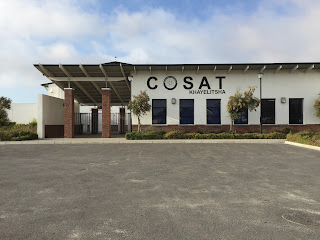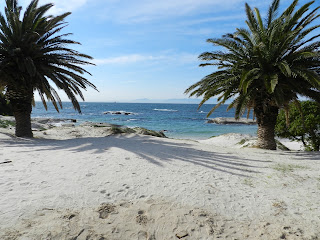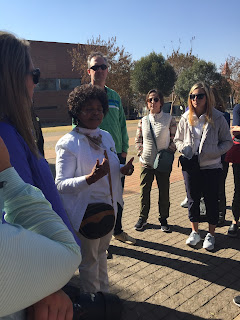Hector Pieterson Memorial and Museum
Hector Pieterson Memorial and
Museum
This memorial was named after
Hector Pieterson who was a boy that was killed on a day the South African
people call the “Day of the Uprising of the School Children”, which happened on
June 16, 1975. It was a nonviolent protest by the school children against the
use of Afrikaans as a medium of instruction. During the protest there was a
confrontation with the apartheid police that resulted in the loss of many
students lives.
Our tour guide Queen informed
us that the Memorial has many symbolic meanings. The different colored rocks that
surround it were chosen to represent the different races in South Africa and
how they all coexist together. The water was placed there to symbolize the
blood that was lost in the uprising, and also the tears of the parents of the
children that were killed. Lastly, the olive trees that are planted around the
Memorial are there to symbolize peace.
In the picture above, you can
see that there is an image of an older boy carrying a younger boy. The young boy
is Hector Pieterson, and the older boy is a high school student named Mbuyisa
Makhubo. You can also see Antoinette
Sithole (the sister of Hector Pieterson) running beside the two boys. This image was seen around the world as a
representation of the treatment of black South Africans in the apartheid
government.
Along with the Memorial we
toured the Museum that is on the same grounds and learned more about the
enforcement of Afrikaans as a language. The picture below is the last stop in
the Museum and is a room dedicated to the children that lost their lives. Each
brick has the child’s name on it.





Comments
Post a Comment